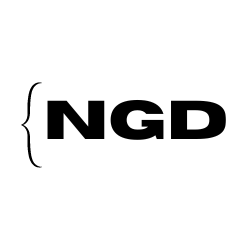The Future of Coding: AI Pair Programming and Its Impact

Introduction
In the ever-evolving landscape of technology, AI pair programming is emerging as a groundbreaking development that promises to reshape the software industry. AI pair programming refers to the use of artificial intelligence-powered coding assistants that work alongside human developers to enhance productivity and creativity. As these tools become more sophisticated, their importance in the tech industry is rapidly growing, offering a glimpse into a future where AI and human intelligence collaborate seamlessly.
The Current State of AI Pair Programming
AI coding assistants, such as GitHub Copilot and TabNine, are leading the charge in this new era of software development. These tools leverage advanced machine learning models, like OpenAI’s GPT, to understand context and generate code suggestions in real-time. GitHub Copilot, for instance, integrates directly into popular code editors and provides developers with relevant code snippets, function completions, and even complex algorithm implementations based on the surrounding code. Similarly, TabNine uses deep learning to predict and suggest code completions, making coding faster and more efficient. These tools have already demonstrated impressive capabilities, from auto-completing lines of code to generating entire functions, significantly accelerating the development process.
Benefits of AI Pair Programming
The benefits of AI pair programming are manifold. First and foremost, these tools boost productivity by automating repetitive tasks and reducing the time developers spend on boilerplate code. This allows developers to focus more on complex and creative aspects of coding, ultimately speeding up the development process. Additionally, AI coding assistants provide learning opportunities, especially for junior developers, by suggesting optimal coding practices and exposing them to new programming techniques.
Moreover, AI pair programming can lead to fewer bugs and improved code quality. By analyzing vast amounts of code data, these tools can offer suggestions that adhere to best practices and highlight potential errors before they become problematic. This preemptive approach not only improves the code's robustness but also enhances the overall quality of software products.
Challenges and Concerns
Despite its advantages, AI pair programming presents several challenges and concerns. Privacy and security are major issues, as AI coding assistants often require access to a developer's codebase to function effectively. This raises concerns about data protection and the potential misuse of sensitive information.
Another significant concern is the potential over-reliance on AI. Developers might become too dependent on these tools, which could hinder their problem-solving skills and creativity. Additionally, there is apprehension about the impact on junior developers' learning and skill development. Relying too heavily on AI suggestions might limit their understanding of underlying concepts and algorithms.
Licensing and copyright concerns also arise, as AI-generated code may infringe on existing intellectual property rights. Ensuring compliance with licensing agreements and understanding the legal implications of using AI-generated code are crucial for developers and organizations alike.
The Future of AI in Coding
The future of AI in coding is both exciting and uncertain. As AI technologies continue to advance, we can expect AI assistants to become even more intelligent and versatile. Future AI tools might offer more personalized recommendations, adapt to individual coding styles, and provide real-time feedback on code quality and performance.
The role of human developers is likely to evolve as well. While AI will handle routine and repetitive tasks, human developers will focus on creative problem-solving, strategic decision-making, and ethical considerations. This shift will require developers to cultivate new skills and embrace the collaborative potential of AI.
Preparing for an AI-Augmented Development Future
To thrive in an AI-augmented development environment, developers should focus on enhancing their technical and soft skills. Understanding AI and machine learning concepts will be invaluable, as will mastering collaboration and communication skills to work effectively with AI tools.
Integrating AI tools into the workflow requires a balanced approach, recognizing both their capabilities and limitations. Developers must remain vigilant about the potential pitfalls of AI, such as biased algorithms and ethical concerns, and ensure that human oversight and judgment remain central to the development process.
Conclusion
AI pair programming is poised to transform the software industry, offering unprecedented opportunities for innovation and efficiency. By embracing this technology, developers can unlock new levels of productivity and creativity. However, it is essential to remain mindful of the challenges and ethical considerations that accompany AI-driven development. As we move forward, staying informed and adaptable will be key to harnessing the full potential of AI pair programming and shaping a future where human and artificial intelligence work hand in hand.



